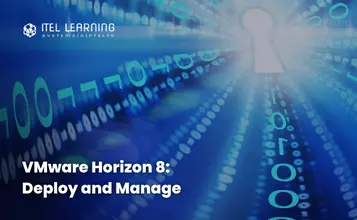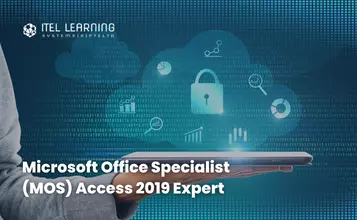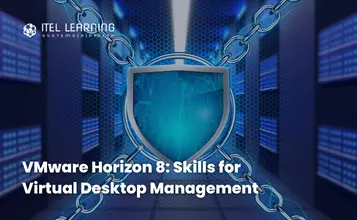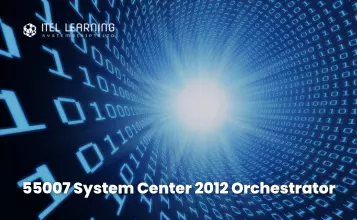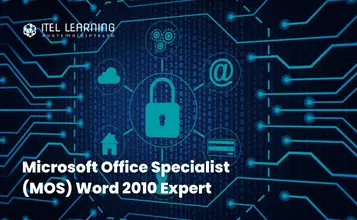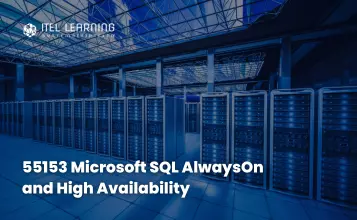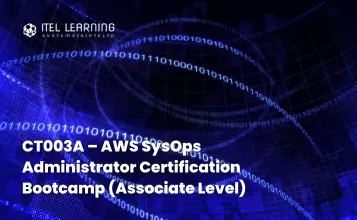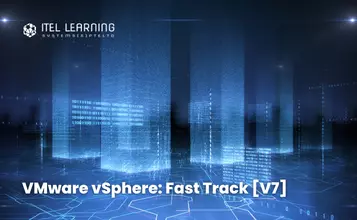Overview
VMware Horizon 8: Deploy and Manage is a five-day combination course of VMware Horizon 8: Skills for Virtual Desktop Management & VMware Horizon 8: Infrastructure Administration. This training collection gives you the hands-on skills to deliver virtual desktops and applications through a single virtual desktop infrastructure platform.
You will build on your skills in configuring and managing VMware Horizon® 8 through a combination of lecture and hands-on labs. You learn how to configure and deploy pools of virtual machines and how to provide a customized desktop environment to end-users. Additionally, you will learn how to install and configure a virtual desktop infrastructure platform.
You learn how to install and configure VMware Horizon® Connection Server™, VMware Unified Access Gateway™, how to configure a load balancer for use with Horizon, and how to establish Cloud Pod Architecture.
Prerequisites
Customers attending this course should have, at a minimum, the following skills:
- Use VMware vSphere® Web Client to view the state of virtual machines, datastores, and networks
- Open a virtual machine console on VMware vCenter Server® and access the guest operating system
- Create snapshots of virtual machines
- Configure guest customization specifications
- Modify virtual machine properties
- Convert a virtual machine into a template
- Deploy a virtual machine from a template
Attendees should also have the following Microsoft Windows system administration experience:
- Configure Active Directory services, including DNS, DHCP, and time synchronization
- Restrict user activities by implementing Group Policy objects
- Configure Windows systems to enable Remote Desktop Connections
- Build an ODBC connection to an SQL Server database
Who Should Attend?
Course Outline
- Introductions and course logistics
- Course objectives
- Recognize the features and benefits of Horizon
- Describe the conceptual and logical architecture of Horizon
- Define a use case for your virtual desktop and application infrastructure
- Convert customer requirements to use-case attributes
- Explain basic virtualization concepts
- Use VMware vSphere® Client™ to access your vCenter Server system and VMware ESXi™ hosts
- Create, provision, and remove a virtual machine
- Create a Windows and a Linux virtual machine using vSphere
- Optimize and prepare Windows and Linux virtual machines to set up Horizon desktop VMs
- Outline the configuration choices when installing Horizon Agent on Windows and Linux virtual machines
- Create a gold master for Windows Horizon desktops
- Identify the steps to set up a template for desktop pool deployment
- List the steps to add desktops to the VMware Horizon® Connection Server™ inventory
- Compare dedicated-assignment and floating-assignment pools
- Outline the steps to create an automated pool
- Define user entitlement
- Explain the hierarchy of global, pool-level, and user-level policies
- Describe the different clients and their benefits
- Access Horizon desktop using various Horizon clients and HTML
- Configure integrated printing, USB redirection, and the shared folders option
- Configure session collaboration and media optimization for Microsoft Teams
- List the advantages of instant clones
- Explain the provisioning technology used for instant clone desktop pools
- Set up an automated pool of instant clones
- Push updated images to instant clone desktop pools
- Explain the difference between an RDS desktop pool and an automated pool
- Compare and contrast an RDS session host pool, a farm, and an application pool
- Create an RDS desktop pool and an application pool
- Access RDS desktops and application from Horizon Client
- Use the instant clone technology to automate the build-out of RDSH farms
- Configure load-balancing for RDSHs on a farm
- Monitor the status of the Horizon components using the Horizon Administrator console dashboard
- Monitor desktop sessions using the HelpDesk tool
- Introductions and course logistics
- Course objectives
- Recognize VMware Horizon reference architecture
- Identify the Horizon Connection Server supported features
- Identify the recommended system requirements for Horizon Connection Server
- Configure the Horizon event database
- Outline the steps for the initial configuration of Horizon Connection Server
- Discuss the ADAM database as a critical component of Horizon Connection Server installation
- Compare the authentication options that Horizon Connection Server supports
- Describe the Smartcard authentication options that Horizon Connection Server supports
- Outline the steps to create a Horizon administrator and custom roles
- Describe the roles available in a Horizon environment
- Explain the role that certificates play for Horizon Connection Server
- Install and configure certificates for Horizon Connection Server
- Install and configure True SSO in a Horizon environment
- Recognize the features and benefits of Workspace ONE Access
- Recognize the Workspace ONE Access console features
- Explain identity management in Workspace ONE Access
- Explain access management in Workspace ONE Access
- Describe the Workspace ONE Access directory integration
- Describe the Workspace ONE Access directory integration
- Deploy virtual applications with Workspace services
- Compare the remote display protocols that are available in VMware Horizon
- Describe the BLAST Display Protocol Codecs
- Describe BLAST and PCoIP ADMX GPO common configurations
- Describe the 3D rendering options available in Horizon 8
- Compare vSGA and vDGA
- List the steps to configure graphics cards for use in a VMware Horizon environment
- Describe the purpose of a replica connection server
- Explain how multiple Horizon Connection Server instances in a pod maintain synchronization
- Explain Horizon Cloud Pod Architecture LDAP replication and VIPA
- Explain Horizon Cloud Pod Architecture scalability options
- Explain concepts relevant to secure Horizon connections
- Describe how to restrict Horizon connections.
- Discuss the benefits of using Unified Access Gateway
- List the two-factor authentication options that are supported by Unified Access Gateway
- List Unified Access Gateway firewall rules
- Describe the situation in which you might deploy Unified Access Gateway instances with one, two, or three network interfaces
